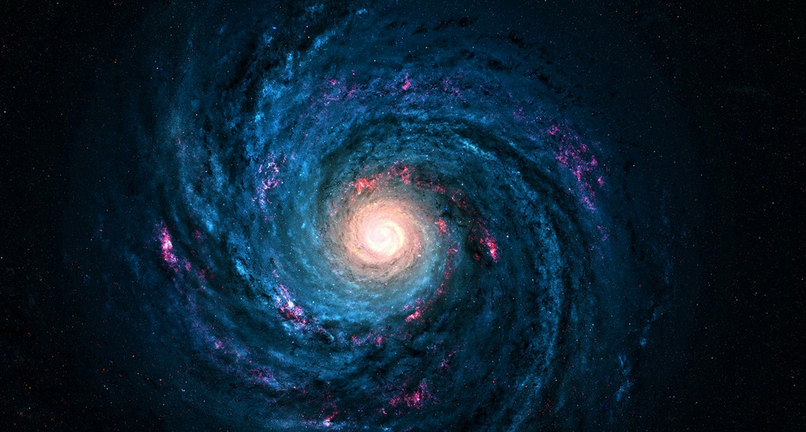"There's something satisfying, I think," Evans said, "about the idea of light traveling for millions of years through space and just at the right moment as it reaches Earth someone looks at the right bit of sky and sees it. It just seems right that an event of that magnitude should be witnessed."
“我想,這還是挺令人滿意的啊,”埃文斯說,“想一想,那個光在太空里走了幾百萬年,抵達地球的時候恰好有個人在不偏不倚地望著那片天空,結果看到了它。能親眼目睹這樣一個重大事件,這似乎是挺不錯的。”
Supernovae do much more than simply impart a sense of wonder. They come in several types (one of them discovered by Evans) and of these one in particular, known as a Ia supernova, is important to astronomy because it always explodes in the same way, with the same critical mass. For this reason it can be used as a standard candle to measure the expansion rate of the universe.
超新星遠遠不止讓你產生一種驚奇感。它們分為幾種類型(有一種是埃文斯發現的),其中之一名叫Ia超新星,它對天文學來說尤其重要,因為這類超新星總是以同樣的方式爆炸,擁有同樣關鍵的質量。因此,它們可以被用做“標準燭光”--用來衡量其他恒星的亮度(因此也是衡量相對距離)的標準,從而衡量宇宙的膨脹率。

In 1987 Saul Perlmutter at the Lawrence Berkeley lab in California, needing more Ia supernovae than visual sightings were providing, set out to find a more systematic method of searching for them. Perlmutter devised a nifty system using sophisticated computers and charge-coupled devices—in essence, really good digital cameras. It automated supernova hunting. Telescopes could now take thousands of pictures and let a computer detect the telltale bright spots that marked a supernova explosion.
1987年,由于需要比目測所能提供的更多的超新星數目,加利福尼亞州勞倫斯·伯克利實驗室的索爾•珀爾馬特開始尋找一種更加系統的搜尋方法。珀爾馬特利用先進的計算機和電荷耦合器件設計了一個絕妙的系統--實質上是一流的數碼相機。它使尋找超新星的工作自動化了。現在,天文望遠鏡可以拍下幾千幅照片,然后利用計算機來發現能夠說明發生了超新星爆炸的亮點。
In five years, with the new technique, Perlmutter and his colleagues at Berkeley found forty-two supernovae. Now even amateurs are finding supernovae with charge-coupled devices. "With CCDs you can aim a telescope at the sky and go watch television," Evans said with a touch of dismay. "It took all the romance out of it."
在5年時間里,珀爾馬特和他的同事們在伯克利利用這種新技術發現了42顆超新星。如今,連業余愛好者也在用電荷耦合器件發現超新星。“使用電荷耦合器件,你可以把天文望遠鏡瞄準天空,然后走開去看電視,”埃文斯不大高興地說,“那種神奇的味道已經不復存在了。”
I asked him if he was tempted to adopt the new technology. "Oh, no," he said, "I enjoy my way too much. Besides"—he gave a nod at the photo of his latest supernova and smiled—"I can still beat them sometimes."
我問埃文斯,他是不是想采取這種新技術。“哦,不,”他說,“我很喜歡自己的辦法,而且”,他朝新近拍攝的一幅超新星照片點了點頭,微微一笑,“有時候我仍能超過他們。”











